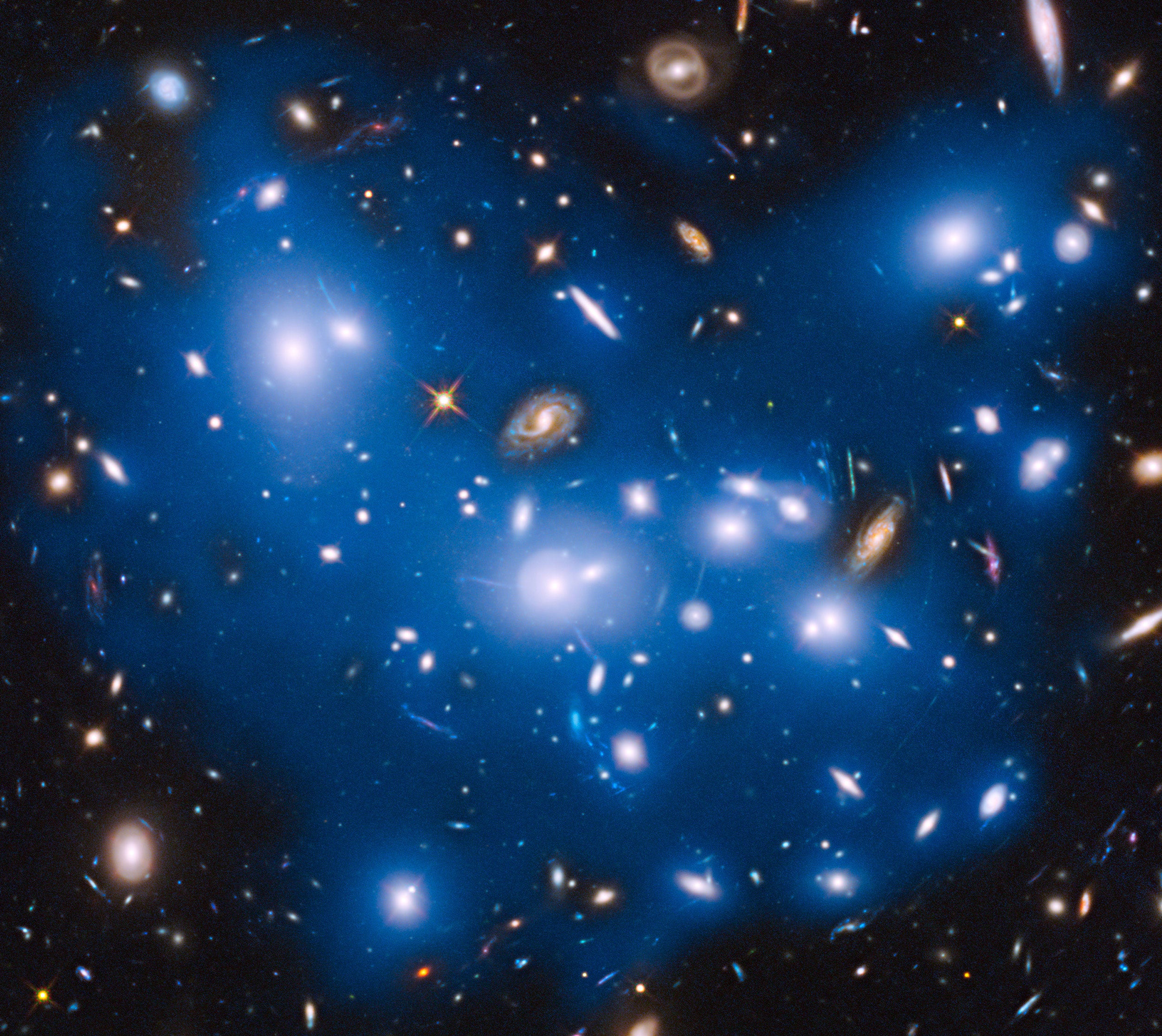Nasa publishes Hubble image showing 'ghost light' from dead galaxies
The blue glow is from some 200 billion stars spilled into the cosmos as four galaxies were ripped apart by gravitational forces 12 billion light-years away

Your support helps us to tell the story
From reproductive rights to climate change to Big Tech, The Independent is on the ground when the story is developing. Whether it's investigating the financials of Elon Musk's pro-Trump PAC or producing our latest documentary, 'The A Word', which shines a light on the American women fighting for reproductive rights, we know how important it is to parse out the facts from the messaging.
At such a critical moment in US history, we need reporters on the ground. Your donation allows us to keep sending journalists to speak to both sides of the story.
The Independent is trusted by Americans across the entire political spectrum. And unlike many other quality news outlets, we choose not to lock Americans out of our reporting and analysis with paywalls. We believe quality journalism should be available to everyone, paid for by those who can afford it.
Your support makes all the difference.People die, plants die and yes, even galaxies die. Though when they go, it’s not surrounded by grieving interstellar clusters, but in the sort of gory, blood-spatters-up-the-wall murder scene that would set Brian Cox’s teeth on edge.
Now, in time for Halloween, Nasa has published an image showing the ‘ghost light’ from a quartet of dead galaxies, ripped apart by gravitational forces over the course of six billion years and now bleeding star matter and planetary debris into the cosmos.
The crime scene is Abell 2744, otherwise known as “Pandora’s Cluster”; a mind-bogglingly vast collection of some 500 galaxies that’s located 4 billion light years away and was formed when four smaller galactic clusters collided. Estimates suggest the cluster’s mass is roughly 400 trillion times that of our own Sun – or 1,000 times that of our galaxy.
The doomed galaxies in the picture currently being “pulled apart like taffy” (according to Nasa) would have been around the size of our own Milky Way Galaxy, and presumably got too close to the center of the cluster where the gravitational tidal forces are strongest.
The vague haze is from the newly-orphaned stars with the image (which was analysed in a study from the Astrofísica de Canarias (IAC) in Spain and published in the October issue of The Astrophysical Journal) and confirms theories about how ‘disassembled’ galaxies.
“This is an original piece of work which marks a “before and after” in our understanding of the formation and evolution of galaxy clusters,” said Mireia Montes of the IAC. “Previous studies of the intra-cluster light had suffered from serious limitation in the depth and the spectral range of the observations.”

The images is thanks to Hubble’s Frontier Fields program, an ambitious three-year project which actually uses galactic clusters such as Abel 2744 as gravitational lenses to see further than any unassisted space telescope.
These clusters are so massive that they warp the light from stars and galaxies behind them, distorting and magnifying it - an effect that was first predicted by Albert Einstein's general theory of relativity.
Join our commenting forum
Join thought-provoking conversations, follow other Independent readers and see their replies
Comments